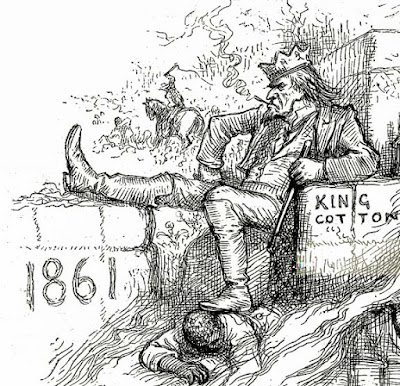Block # 11 Ever Widening Circle by Pat Styring
"League of friendship. This is not marriage but it is something like it. Mutually to love, to trust, to rejoice, and mourn together---such is the relation which subsists between Julia Pierpont Werne and Emma Willard."More than an educated young woman, Julia was a missionary "in the cause of women's education," according to Anne Firor Scott who has studied Willard's influence, characterizing it as an "Ever Widening Circle."
Emma Hart Willard (1787-1870) taught in several schools,
the most famous being her Troy Seminary in New York.
Student Elizabeth Cady Stanton recalled "a splendid looking woman...my idea for a queen....She was always robed---one must use the word 'robed' so majestic was her bearing---in rich black silk or satin, and her head was crowned with a large white mull turban."
Friend Julia married Richard Henry Warne of Mayfield, New York in 1820 or 1822 and returned to Vermont.
"Henry Warne
Infant Child of
RH & Julia Pierrepont
Warne"
The baby's tombstone with its weeping willow is
near his father's in Manchester, Vermont.
Their only child Henry died as an infant and Richard, only 28, followed in 1824. Julia seems to have gone back to Sparta, a prosperous cotton producing town.
Mid-century school in Sparta, Georgia. Cotton made Sparta
and cotton's demise killed it. The town is full of 19th-century
buildings reflecting those ups and downs.
In 1832 she accepted an offer from Elias Marks of Columbia, South Carolina. Dr. Marks, a physician, was almost as dedicated to educational innovations as Emma Willard. His medical degree was from New York but he was born in Charleston of Jewish immigrants from London.
1850 Lithograph by Eugene Dovilliers
South Carolina College for men
made Columbia the state's educational center.
His first school in Columbia was begun with wife Jane Barham Marks but after her death giving birth to their fourth child in 1827 he closed the school and opened another north of town in the sand hills, a healthier location he hoped. He called the acreage Barhamville after Jane's family.
Barhamville school, painted about 1860 by Eugene Dovilliers,
the obligatory French-born faculty member.
Julia became head mistress at Barhamville and converted Elias Marks to Emma Willard's educational philosophies and curriculum. She married Dr. Marx in 1832.
The South Carolina Female Collegiate Institute attracted wealthy families from nearby states, including Georgian Mittie Bulloch Roosevelt (see block # 9) and John Calhoun's daughter Anna Maria. The curriculum was more academic than ornamental. Mary Kelley in her history of women's education called it one "of antebellum America's leading schools." The Markses educated 4,000 students over 32 years.
Could that be Julia P. Marks leading
students in a promenade in Dovilliers's painting?
Julia gave birth to several children but only Edwina and Edward lived to adulthood. Edward, a student at Harvard in 1861, returned to Columbia with the war.
Anna Maria Calhoun Clemson (1817-1885) founded
Clemson University, another link in the
Willard educational network.
Some of the places Julia lived from Vermont to Georgia
The Block
Ever Widening Circle by Mark Lauer
Recall Emma Willard's ever-widening circle of educators with a block of ever-widening squares.
.
Massachusetts album dated 1854 - 55 from Forsyth's Auctions
This square in a square design made an excellent friendship block, leaving room for lengthy sentiments. Our block goes around the square three times, but variations increase the complexity.
The pattern is BlockBase #2376, called
Hour Glass by the Ladies Art Company around 1890.
Just three ever-widening squares...
Denniele Bohannon kept going. Our pattern stops at three.
Cutting a 12" Finished Block
B - Cut 1 square 7-1/4". Cut into 4 triangles with 2 diagonal cuts. You need 4 triangles.
C - Cut 1 square 6-1/2".
Sewing
Ever Widening Circle by Mark Lauer
A Sentiment for November
A classic laurel wreath with the date 1854 featured
During the War & After
"Mrs. A.B. Kinsler
Columbia
SC"
Detail of a block from a set dated 1861.
Charleston Museum of Art
Elias Marks wrote a song at the beginning of the war Chicora
"dedicated to the patriotic ladies of the Southern Confederated States"
with a small sketch of Barhamville.
Much of Columbia burned during Sherman's occupation in 1864.
The school remained untouched due to Dr. Marks's firefighting efforts.
Photo by George N. Barnard
"Barhamville, tis true, has not burnt, but at present they have no income at all....Dr. M. is too infirm to think of opening B. as a school again....Both Dr. and Mrs. M. look very badly. They seemed very glad to see me and I think it affords them real pleasure to receive visits from their old pupils."Two years later Beaufort's sister Leora wrote that the Markses were boarding with her family while everyone hoped that the giant school building, a white elephant, might be sold. "I do hope they will carry out the plan so these old people can have something to live on..."
Nothing came of the plan. The Marks family moved to Washington City where Edwina supported her family with a clerical job. Julia died there in 1878 and Dr. Marks died in 1886 at 95 years of age. The abandoned South Carolina Female Collegiate Institute burned in 1869.
Two by Becky Brown
Ever Widening
Two variations of a square inside a square block in an album documented in the Connecticut project.
Anne Fiore Scott "The Ever Widening Circle: The Diffusion of Feminist Values from the Troy Female Seminary, 1822-1872," History of Education Quarterly, XXIX (1979)




















































